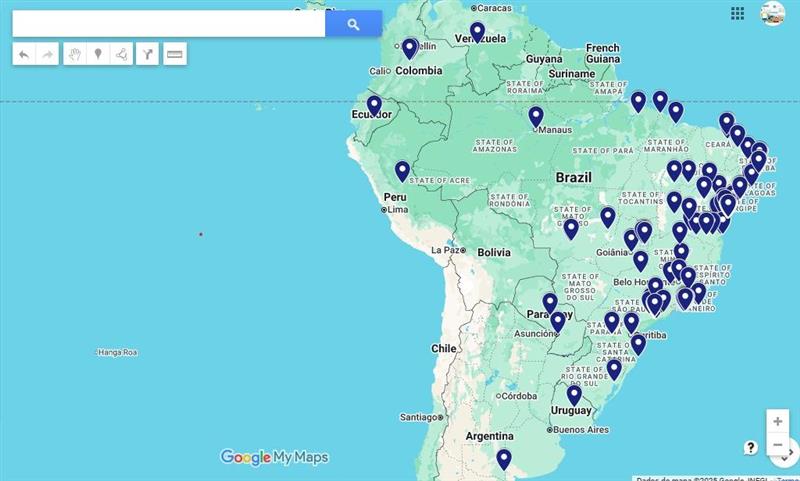Continuous PNAD
With a rate of 8.6%, unemployment grows again in the quarter ended in February
March 31, 2023 09h00 AM | Last Updated: April 03, 2023 04h59 PM
 After six consecutive quarters of decline, the unemployment rate grows again - Photo: Rovena Rosa/Agência Brasil
After six consecutive quarters of decline, the unemployment rate grows again - Photo: Rovena Rosa/Agência BrasilThe unemployment rate reached 8.6% in the quarter ended in February, an increase of 0.5 percentage points (pp) compared to the previous three months. This is the lowest result for the period since 2015 (7.5%). The number of unemployed grew 5.5% and reached 9.2 million persons, which represents an increase of 483 thousand persons looking for a job. Data are from the Continuous National Household Sample Survey (Continuous PNAD), released today (March 31) by the IBGE.
“In the quarter ended in February, this increase in unemployment occurred after six consecutive quarters of significant declines, which were greatly influenced by labor recovery in the post-pandemic. A return to unemployment growth in this period may signal a return to the seasonal nature of the labor market. If we look backwards, in the time series of the survey, all the moving quarters ended in February are marked by the expansion of unemployment, with the exception of 2022”, explains the IBGE coordinator of Labor and Income, Adriana Beringuy.
The fall in the number of employed persons was 1.6%, with a reduction of 1.6 million persons in the labor market compared to the previous quarter. As a result, the employment-to-population ratio, the percentage of employed persons in the working-age population, reached 56.4%, down 1.0 pp in the same comparison.
“The employed population has a behavior that is the inverse of the trajectory of the unemployed population. In the first months of the year, there is a movement practically combined, with a retraction of the employed population and the expansion of unemployment. This is linked both to the layoffs of temporary workers who are usually hired at the end of the year and to the greater pressure of the job market after the holidays,” she says.
Among the categories that most lost jobs in the period are workers without a formal contract in the public sector (-14.6% or 457 thousand less), workers without a formal contract in the private sector (-2.6% or 349 thousand less persons ) and the self-employed with CNPJ (-4.8% or 330 thousand less). The number of formal workers in the private sector remained stable after six consecutive quarters of significant growth.
Comparing again with the previous quarter, there was a reduction of 206 thousand persons in the category of employers, which now totals 4.1 million persons. The number of domestic workers remained stable and is estimated at 5.8 million. The informality rate was also stable in the quarter (38.9%).
In the same period, there was no growth of occupation in any of the sectors analyzed by the survey. Four of them had retraction in the period: Public administration, defense, social security, education, human health and social services (-2.7%, or 471 thousand less persons), General industry (-2.7%, or 343 thousand less persons ), Agriculture, livestock, forest production, fishing and aquaculture (-2.3%, or 202 thousand less persons) and Other services (-3.2%, or 171 thousand less persons). The other investigated sectors remained stable.
According to Ms. Beringuy, in the public administration sector, this decrease in occupation has seasonal reasons. “In the case of this activity, the retraction is related to the health sectors and, mainly, education. It is possible to observe, throughout the time series, that at the beginning of each year, there are layoffs, especially for workers without a formal contract hired by the public administration on a temporary basis”, she highlights.
With the increase in unemployment and the decrease in the number of employed persons, the population outside the labor force grew by 2.3%, which represents 1.5 million more persons. In the same comparison, the potential workforce, estimated at 7.3 million, was stable. This group brings together those who were not employed or looking for a job in the market, but who had the potential to become employed. The number of discouraged persons was also stable when compared to the previous quarter. They add up to 4 million persons.
Earnings keep stable in the quarter ended in February
The real average earnings were estimated at R$ 2,853 and remained stable compared to the quarter ended in November. There was an increase only in the sectors of Lodging and food (6.0%, or R$ 107 more) and Domestic services (2.6%, or R$ 28 more). The others were stable. With regard to employment types, there was an increase among domestic workers (2.6%, or R$ 28 more) and workers in the public sector (including statutory and military servants) (2.0%, or R$ 84 more).
The wage bill was also stable compared to the previous quarter. It was estimated at R$ 275.5 billion, growing 11.4% compared to the same period of the previous year.
More about the survey
The Continuous PNAD is the main instrument for monitoring the workforce in the country. The survey sample per quarter in Brazil corresponds to 211,000 households surveyed. Around two thousand interviewers work on the survey, in 26 states and in the Federal District, integrated into the collection network of more than 500 IBGE agencies.
Due to the Covid-19 pandemic, the IBGE has implemented telephone data collection as of March 17, 2020. In July 2021, face-to-face collection was resumed. The interviewer ID can be checked on the Respondendo ao IBGE website or via Call Center (0800 721 8181), by confirming the interviewer's registration, ID or Security number, which can be requested by the respondent.
Consult data from the Continuous PNAD on Sidra database.

















